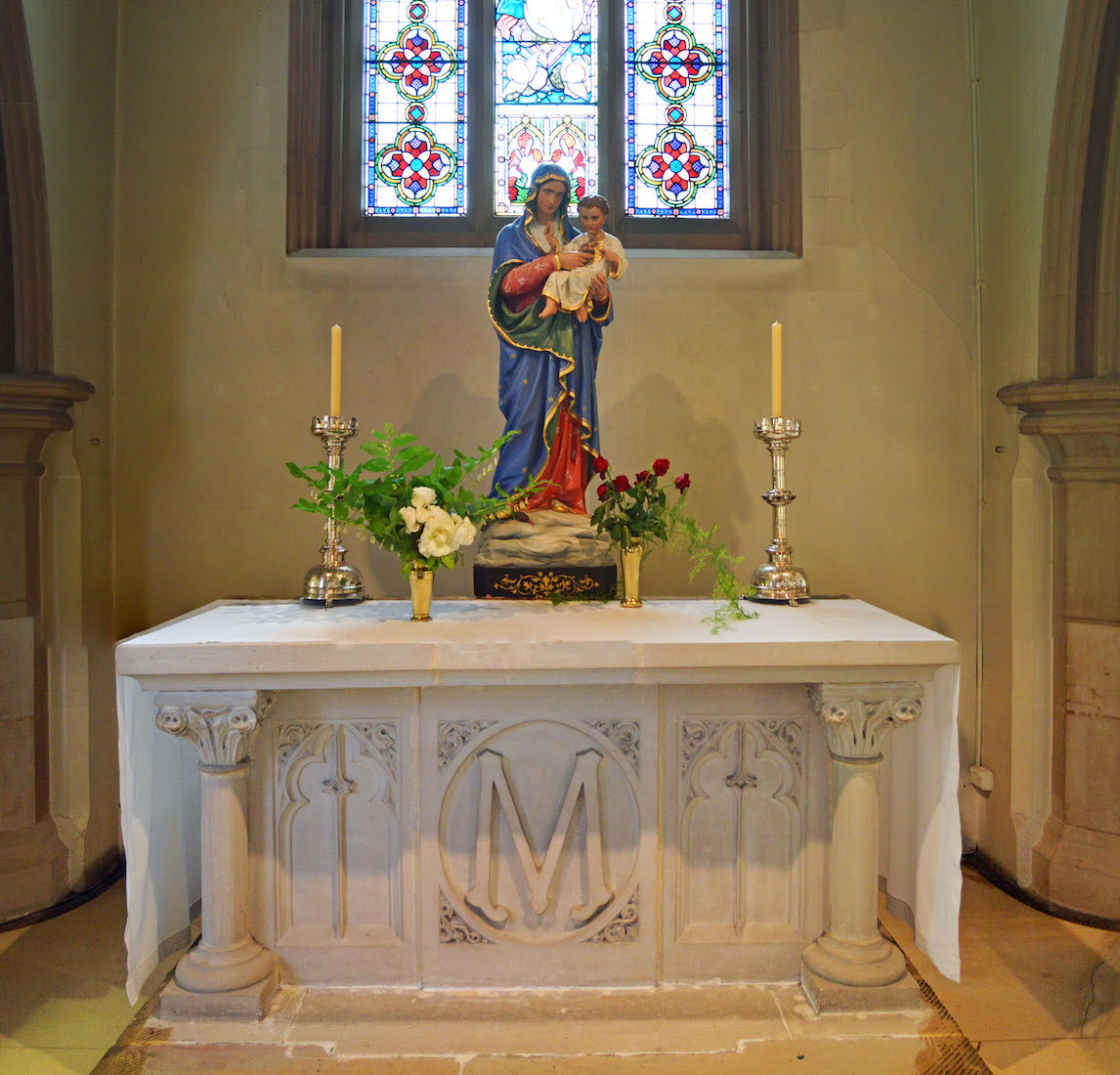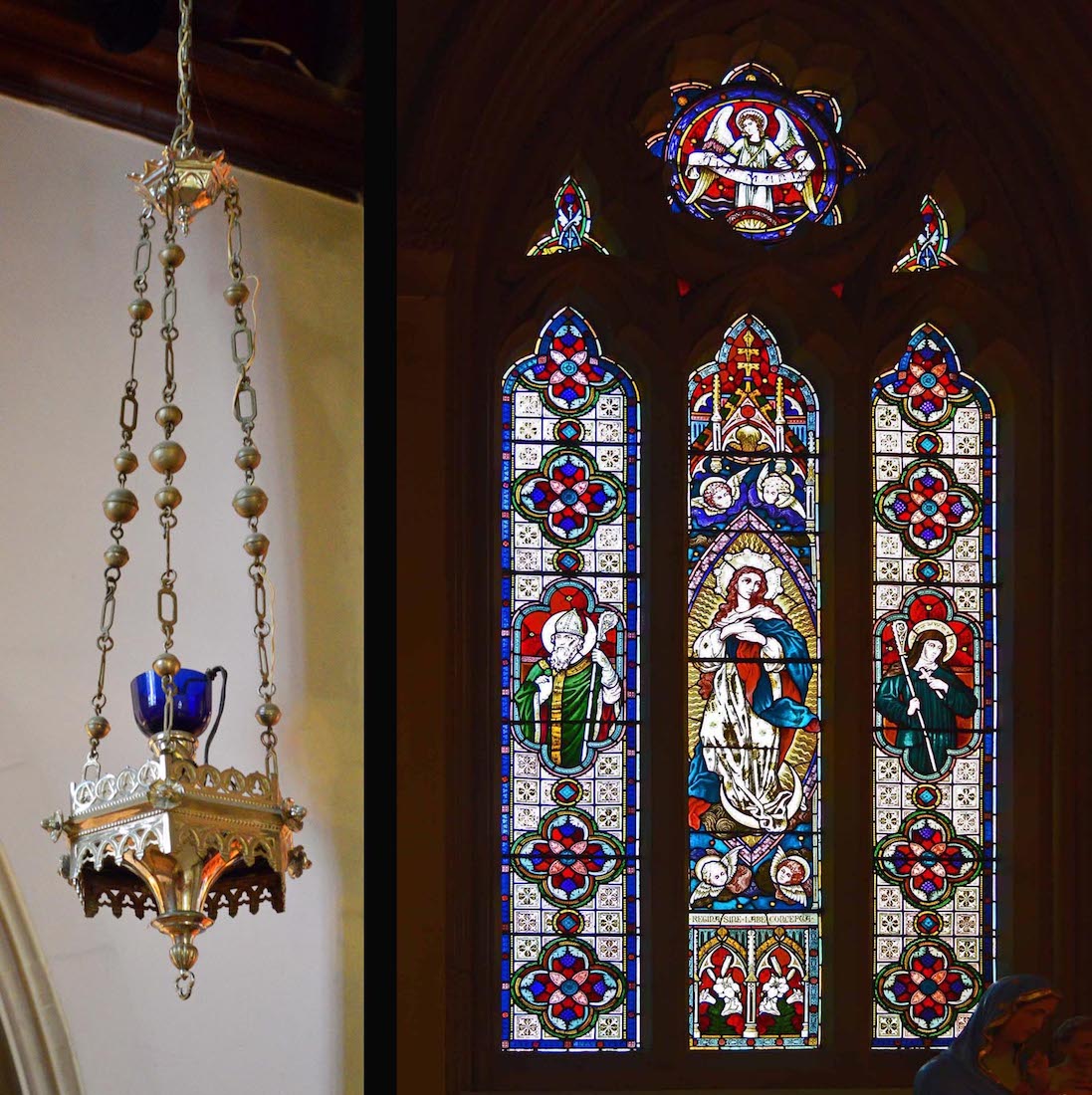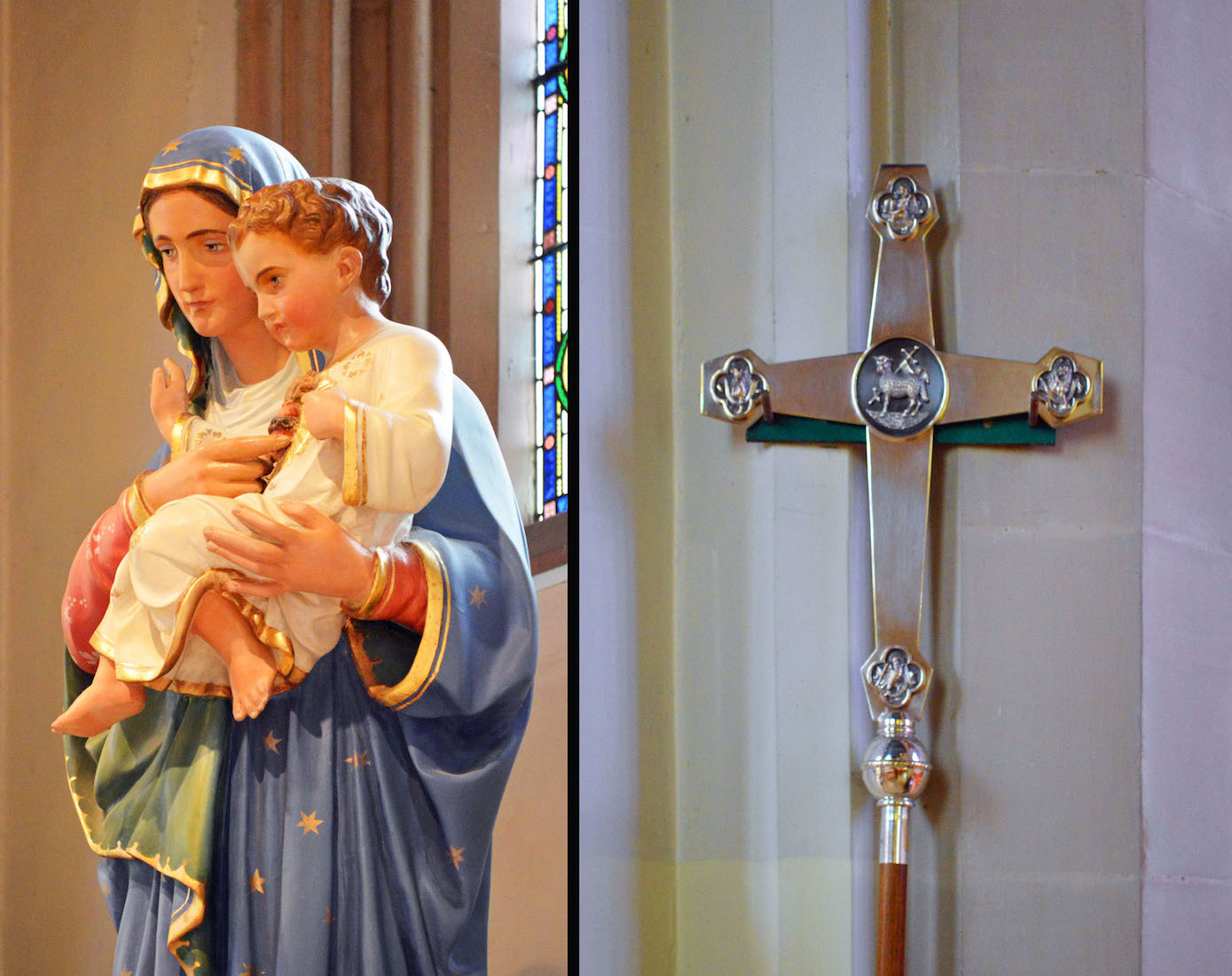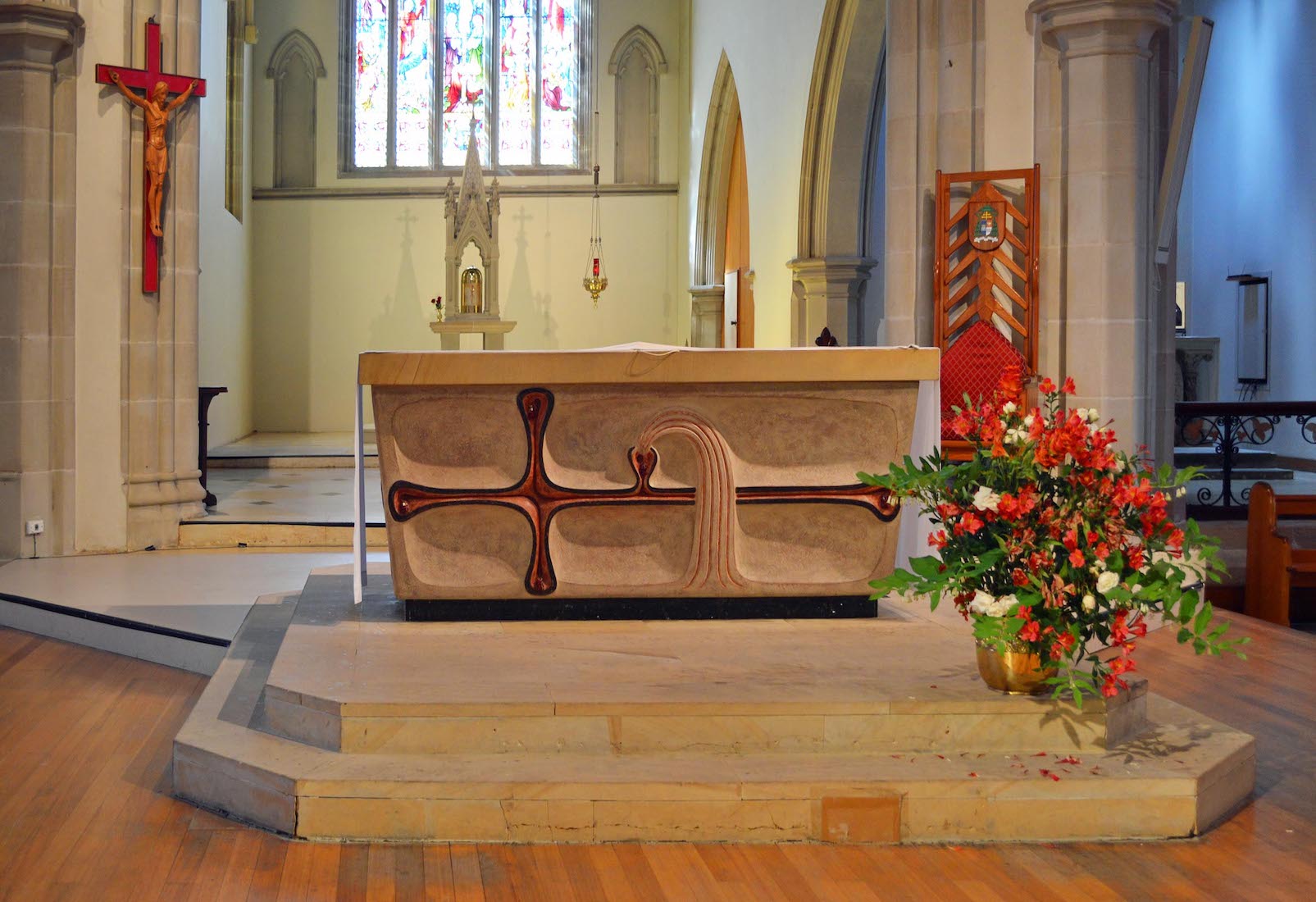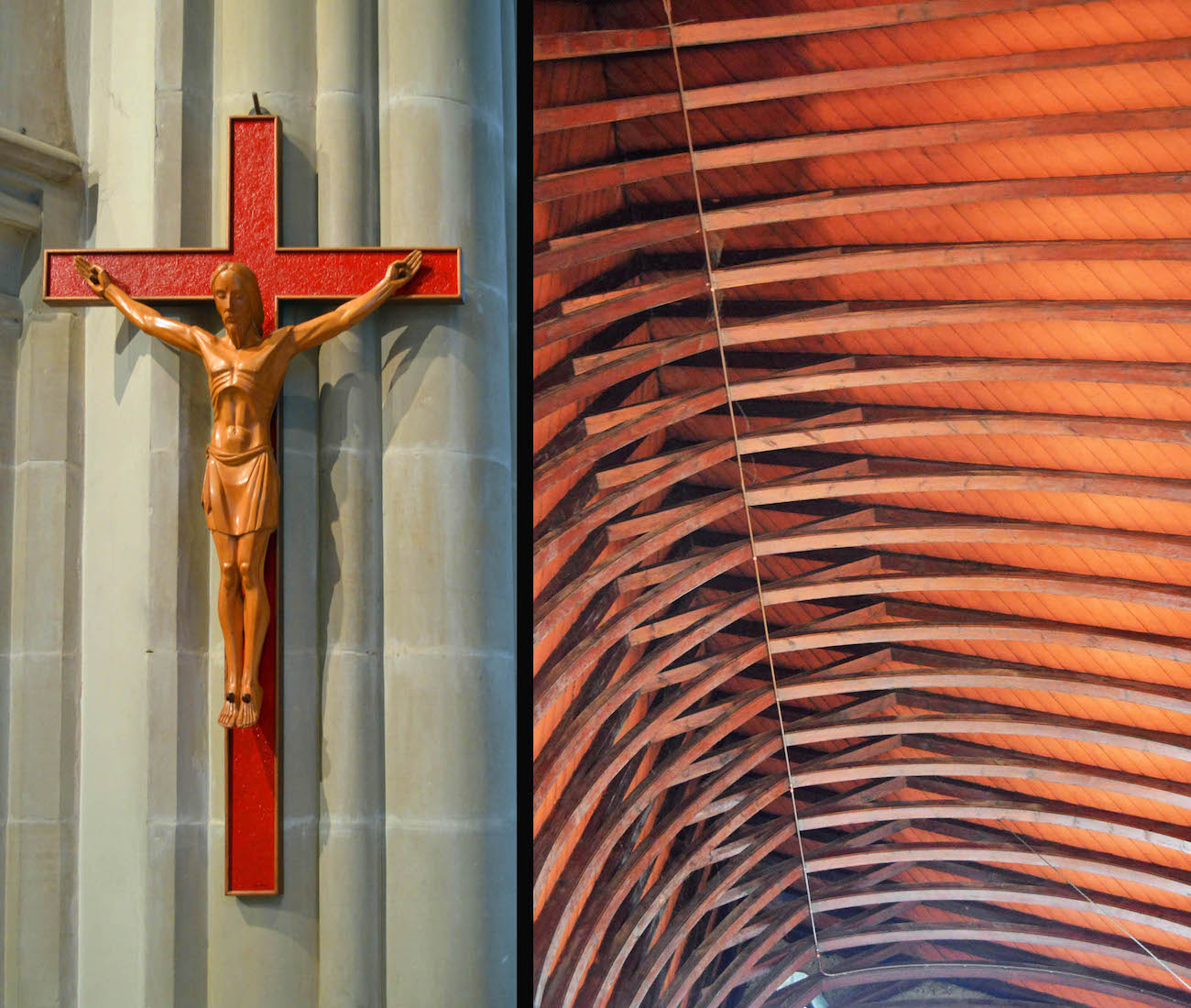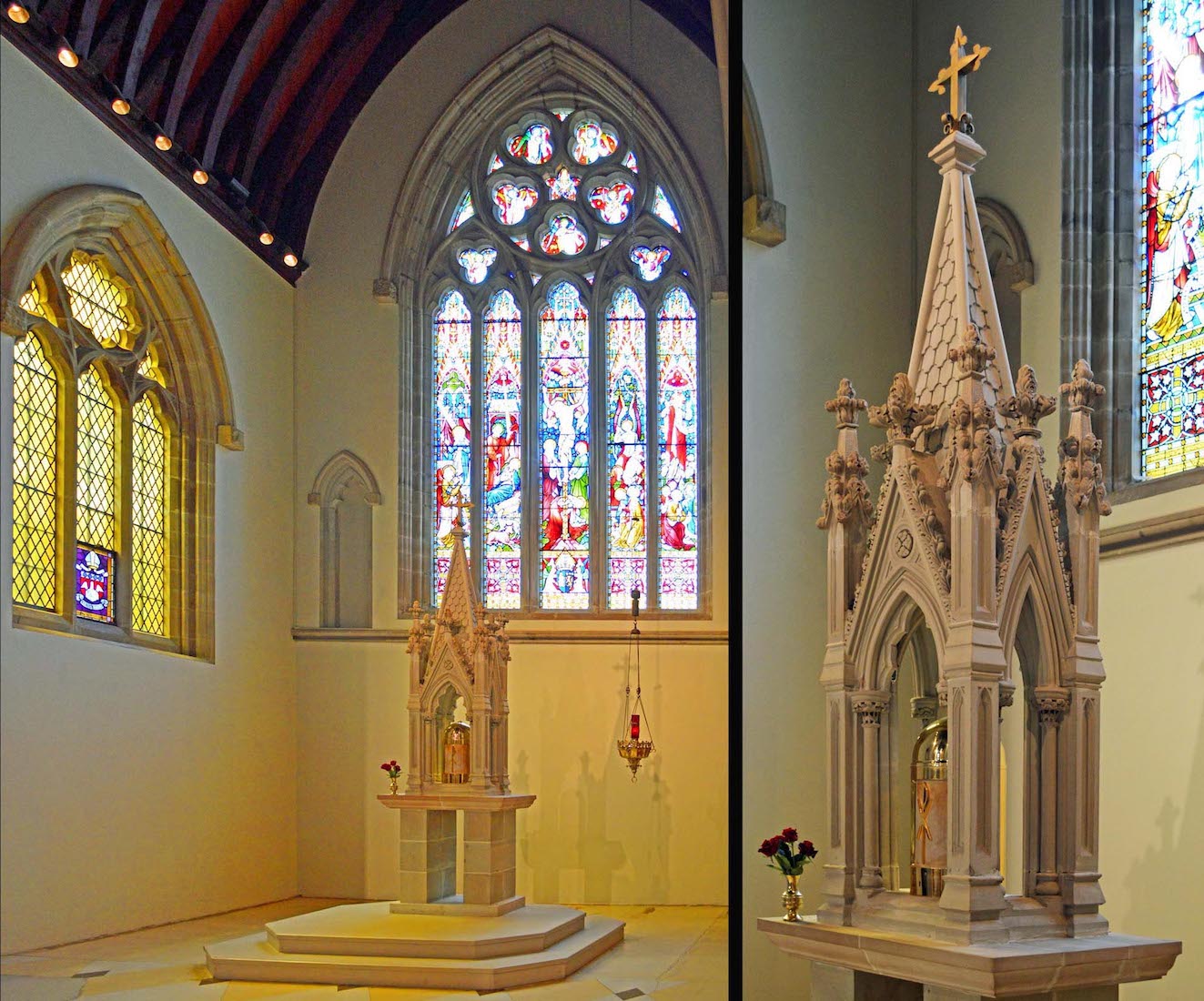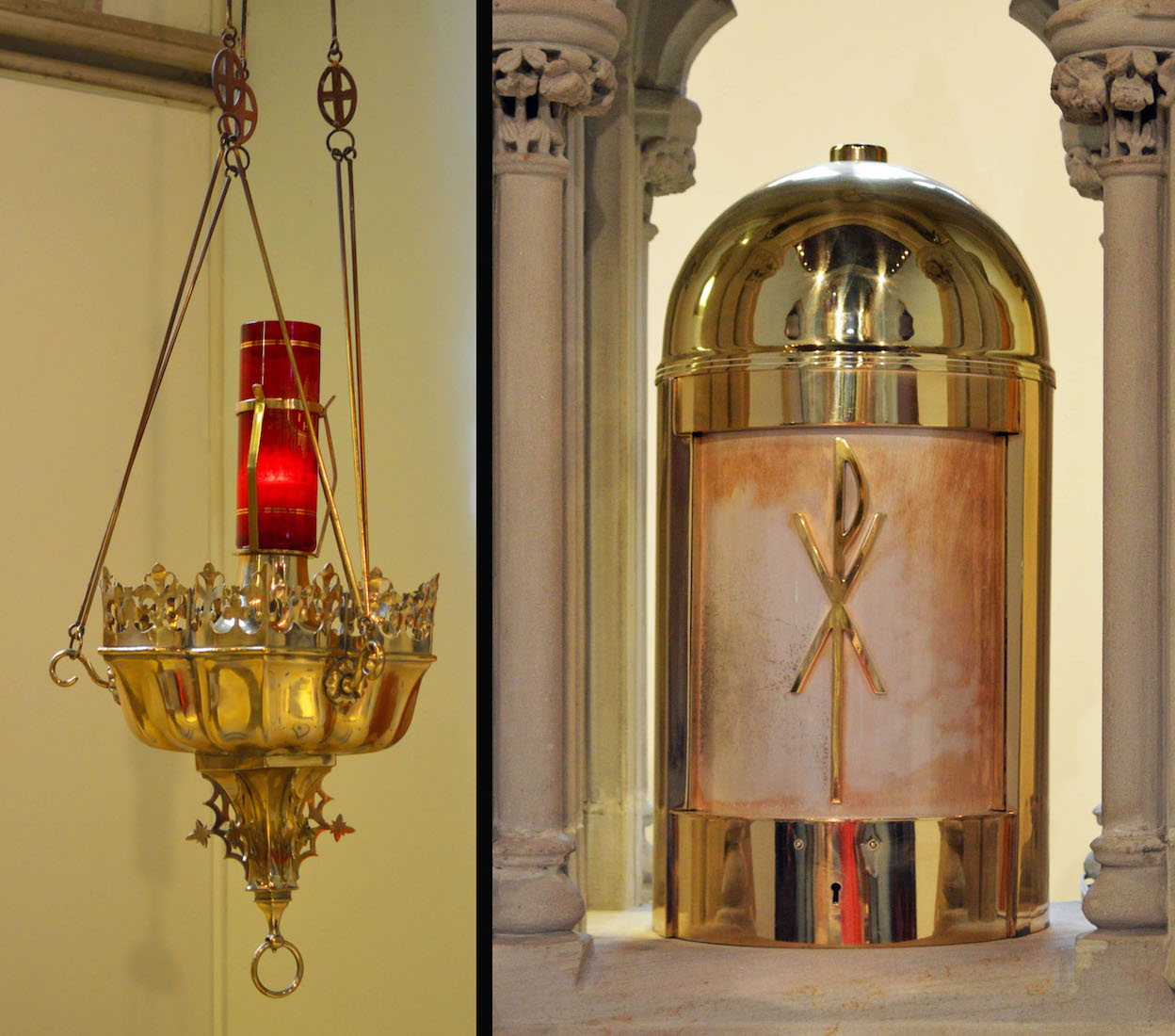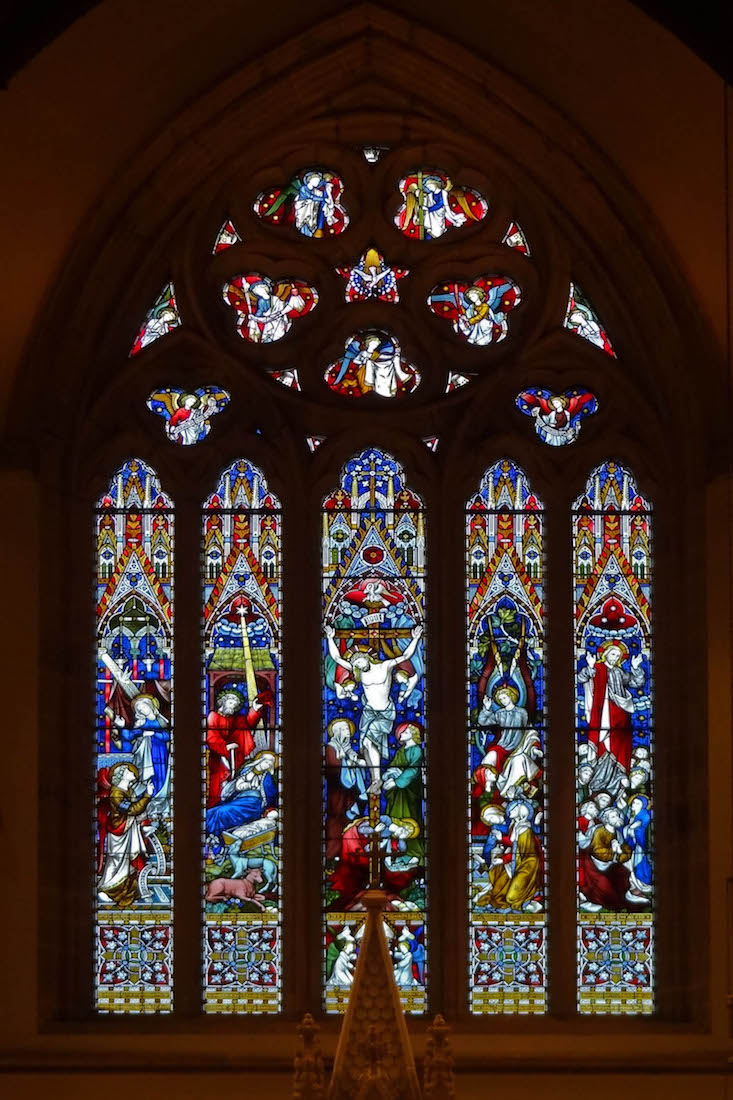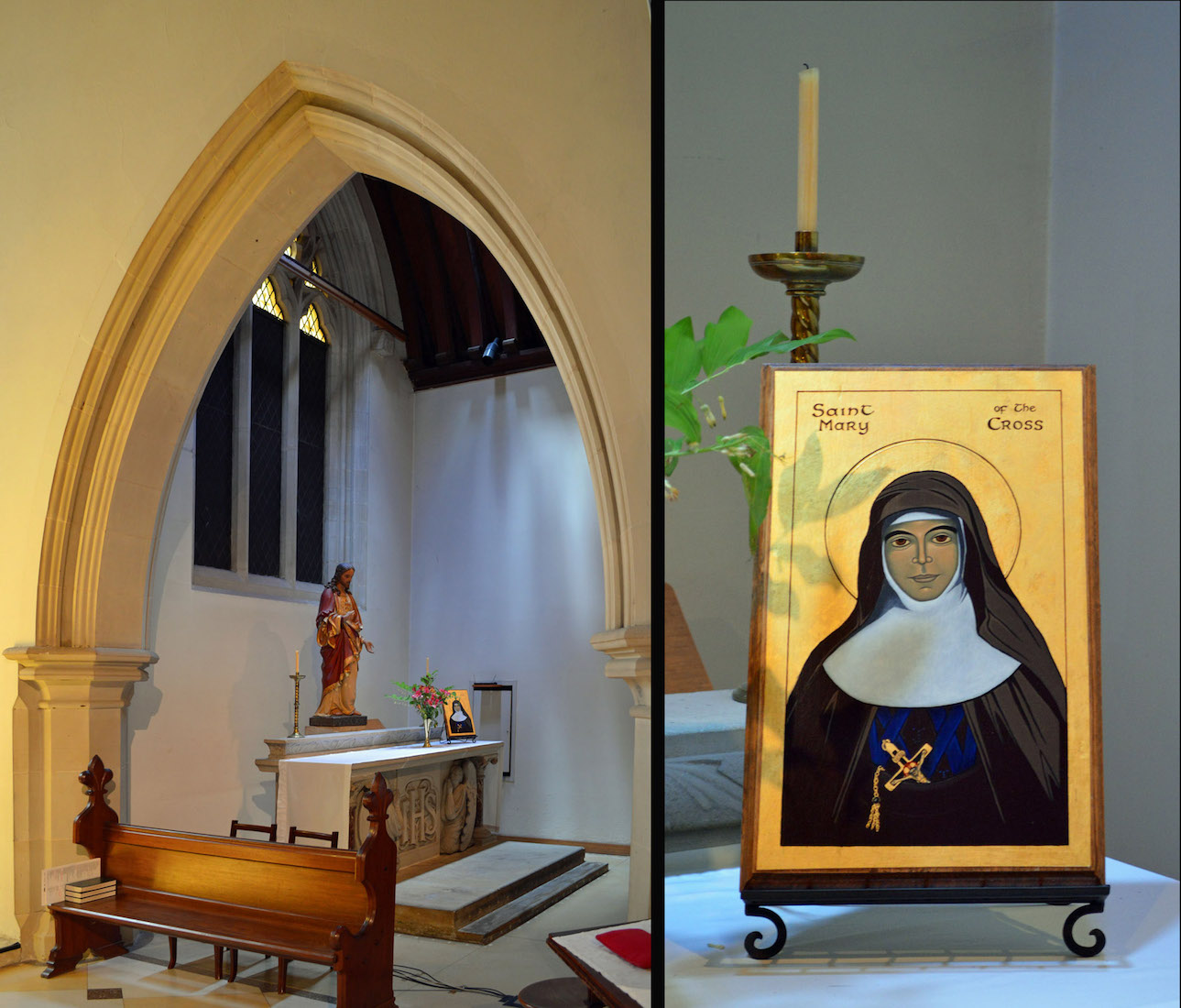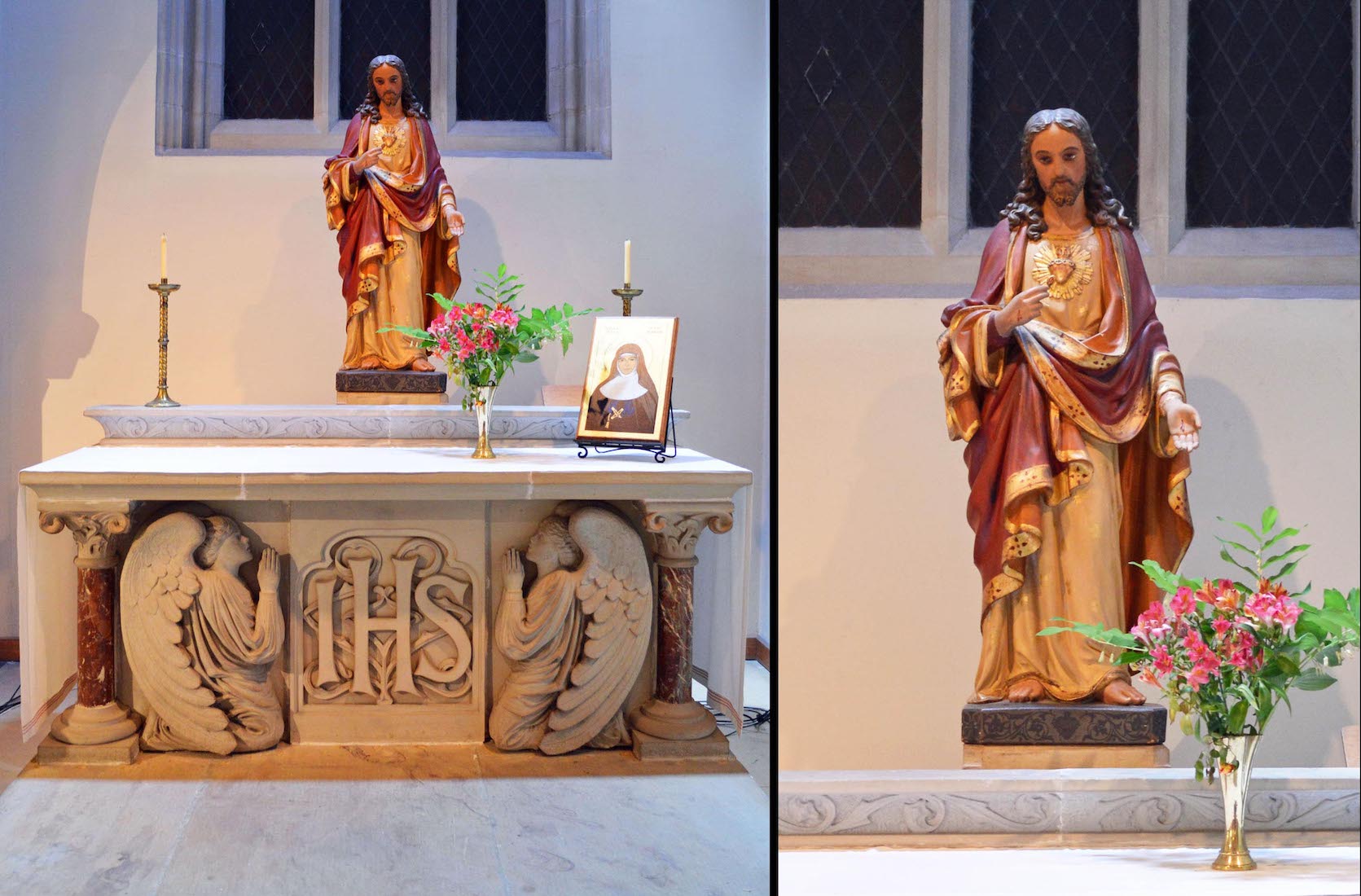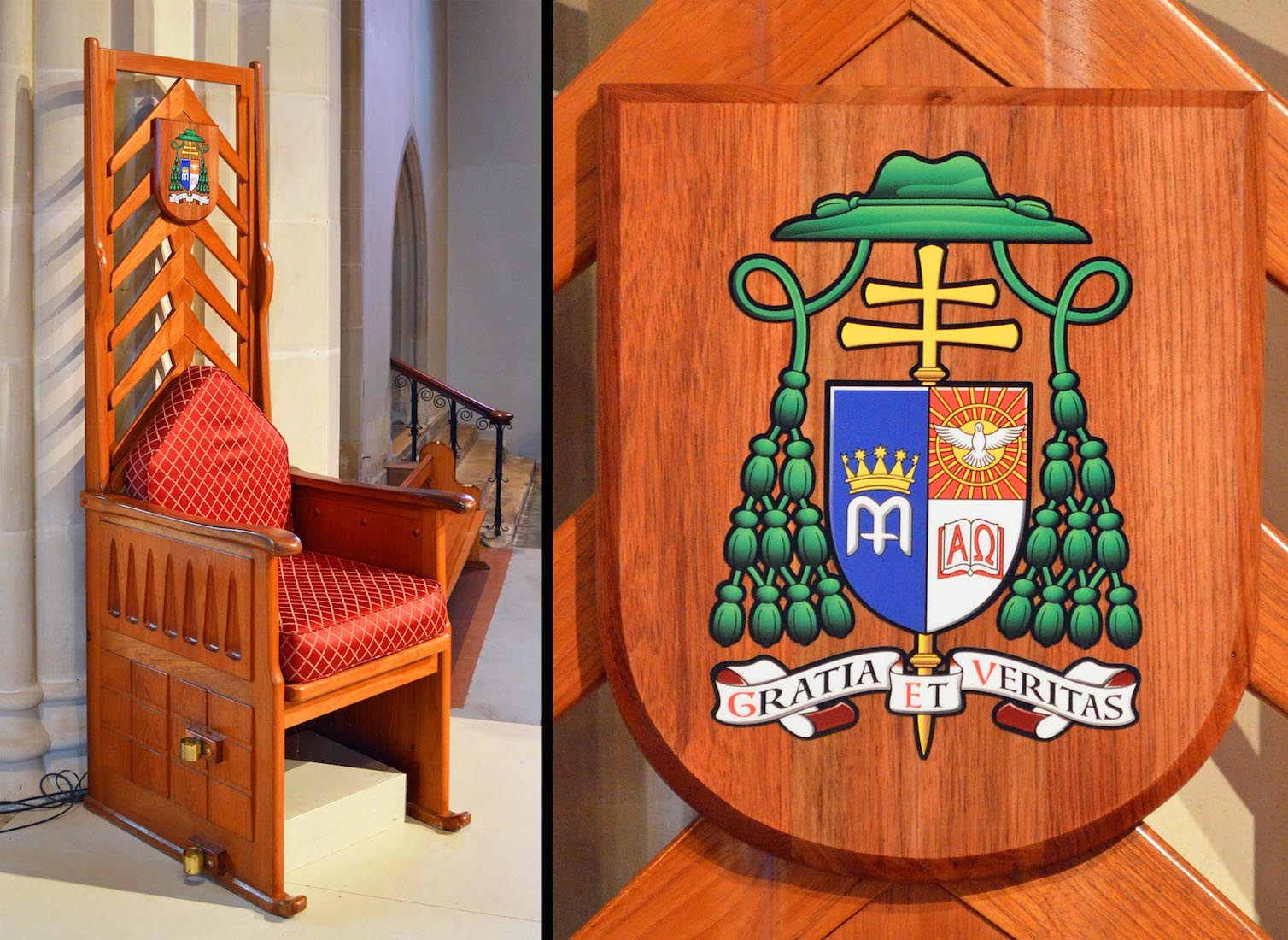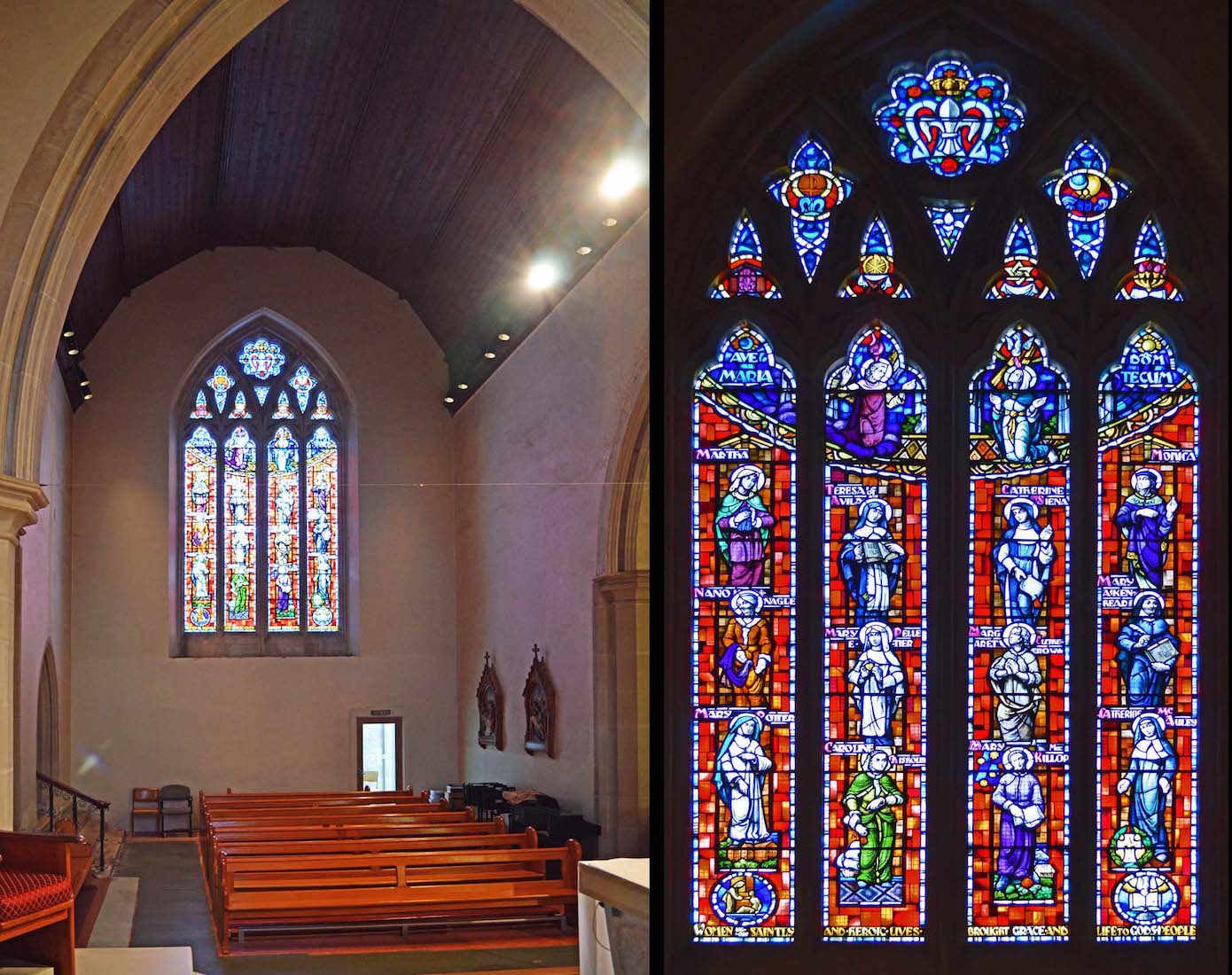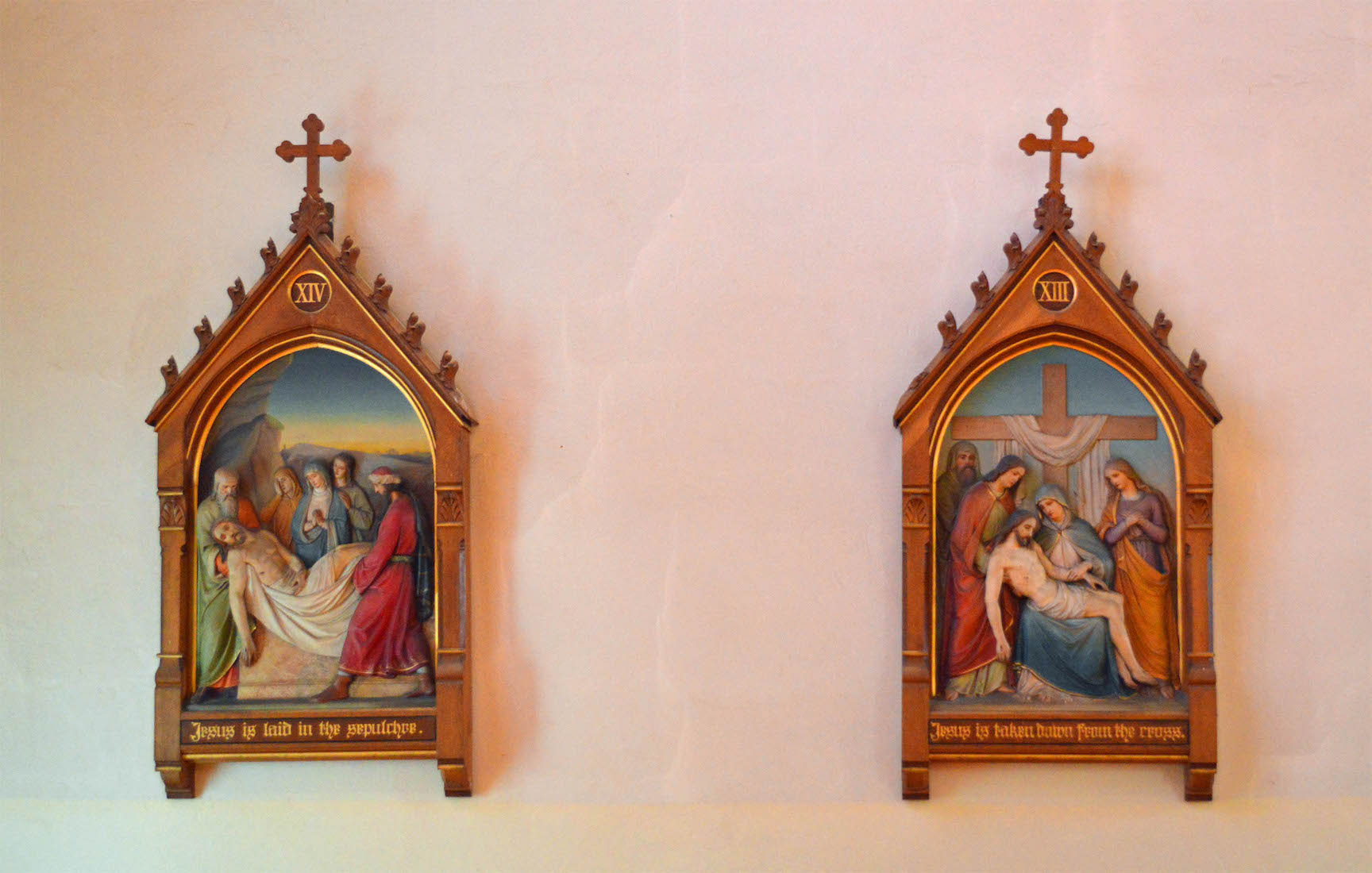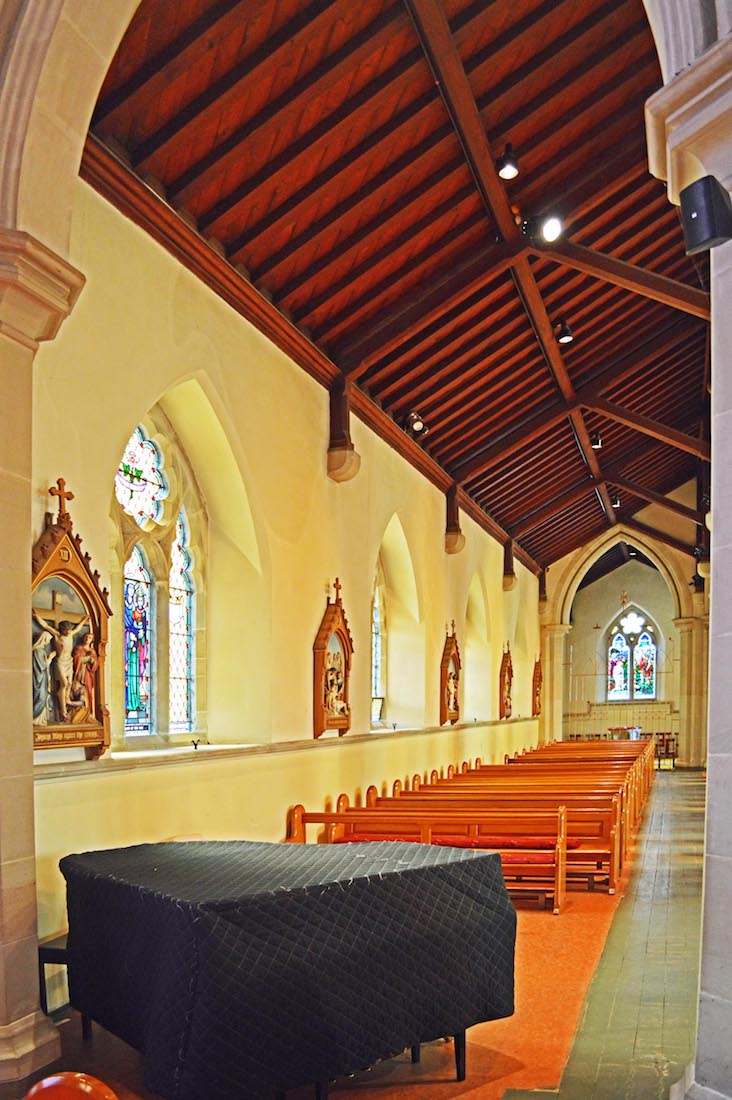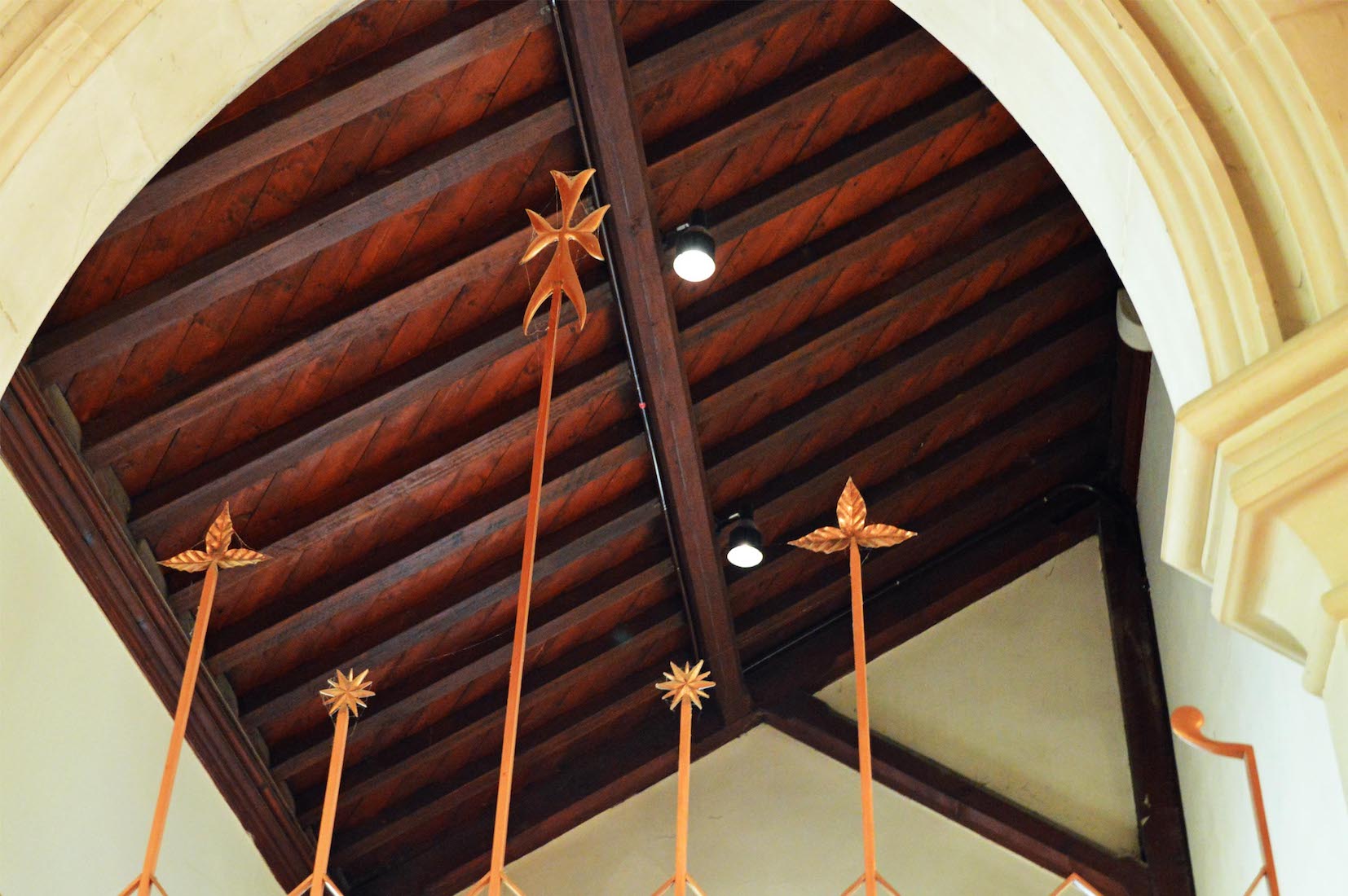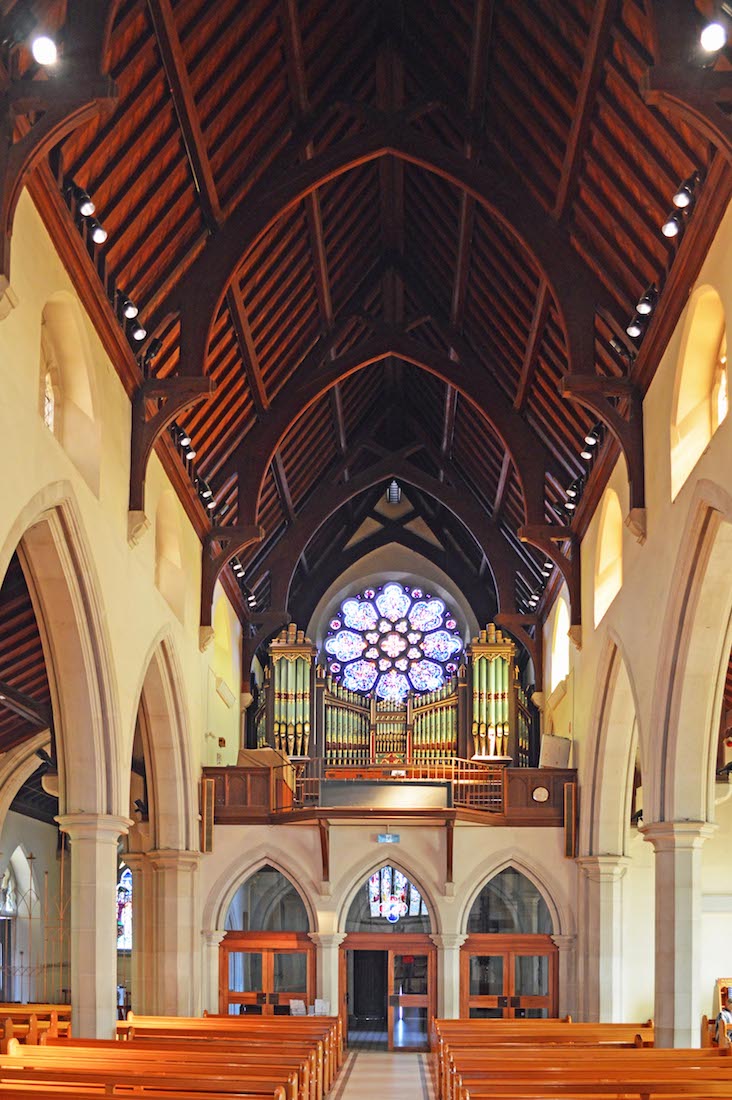41. LITANY OF THE BLESSED VIRGIN MARY
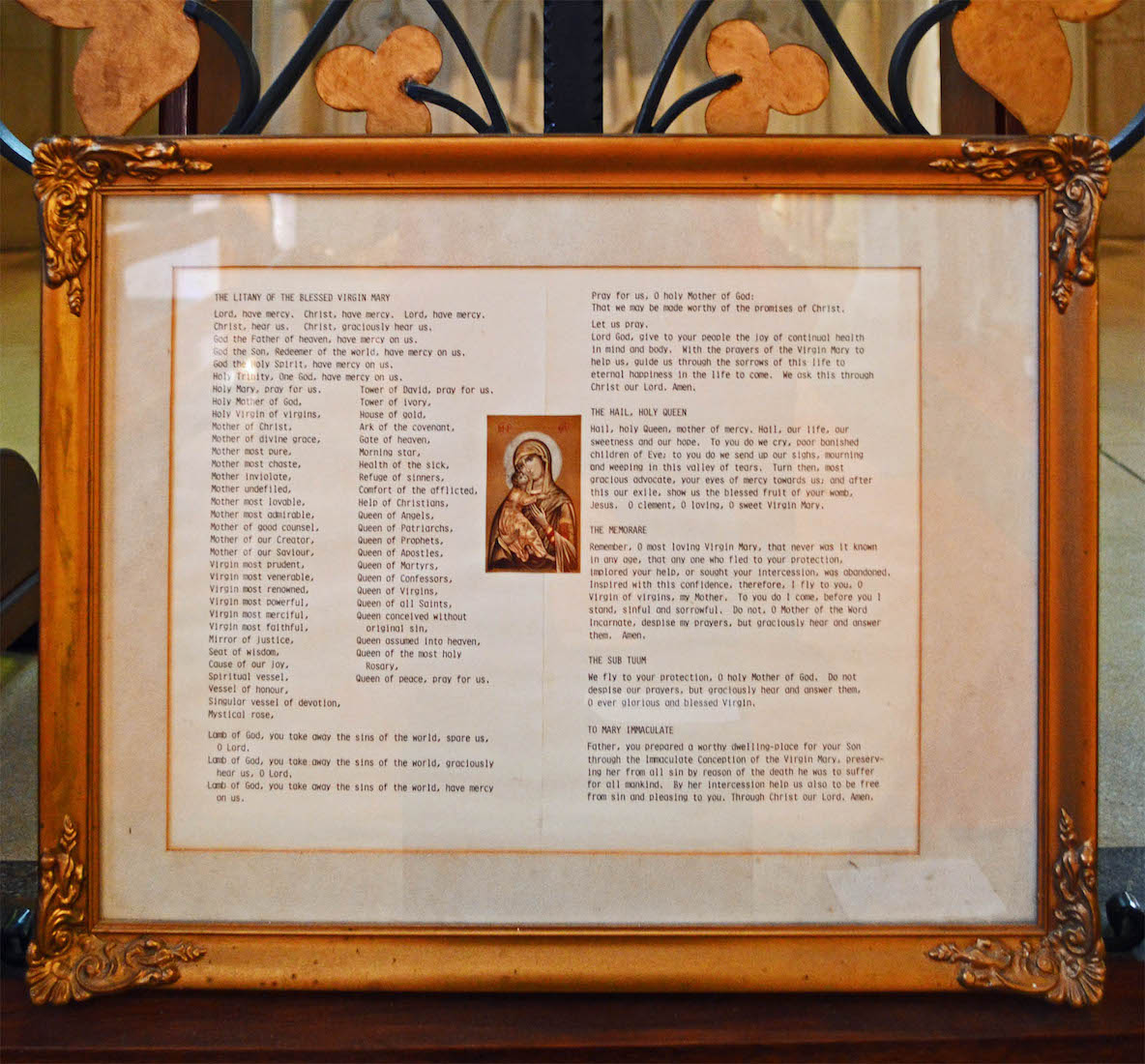
As we face the Lady Chapel there is an altar rail in black and gold wrought iron. Attached to this is ‘The Litany of the Blessed Virgin Mary’ – a litany of prayer and praise. PLAN
42. TAPESTRY AND PLAQUE
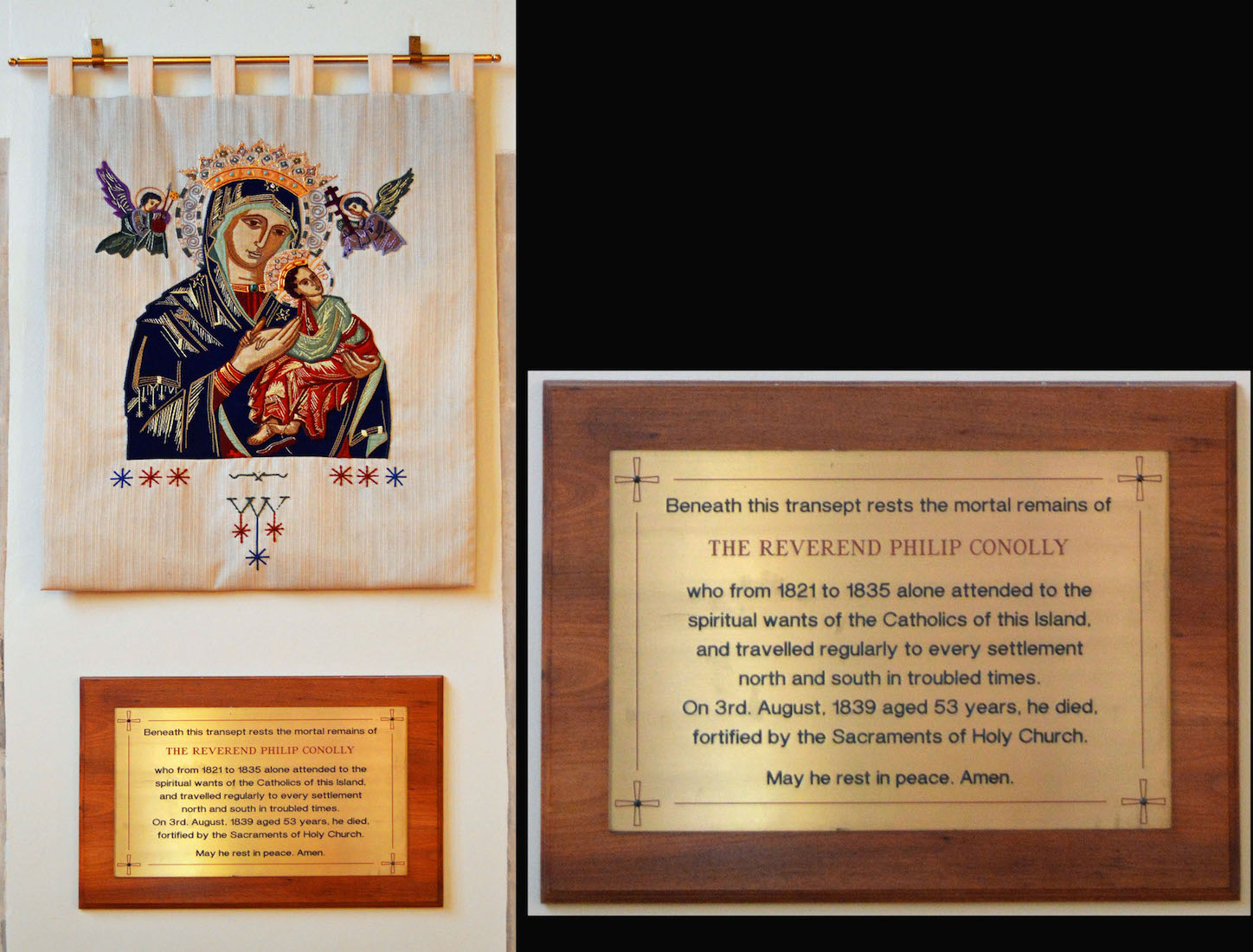
The tapestry shows the well known image of ‘Our Lady of Perpetual Succour’. This was originally a celebrated Byzantine icon. The plaque is in memory of The Reverend Philip Conolly. Conolly (1786 – 1839) was a Roman Catholic Chaplain who travelled all over Tasmania.
43. LADY CHAPEL ALTAR
The tasteful chapel altar bears the ‘M’ monogram. The Madonna with Child stands just behind.
44. CHAPEL LAMP AND WINDOW
The red of the traditional sanctuary lamp is here replaced by blue. The window with Mary at centre bears the words in Latin: ‘Queen conceived without (original) sin’.
45. STATUE AND CROSS
At left is a close view of the statue of the Virgin and Child. At right is the processional cross. The central icon shows a lamb with a flag. Jesus is often referred to as ‘The Lamb of God’. As a visual motif the lamb has been most often represented since the Middle Ages as a standing haloed lamb with a foreleg cocked ‘holding’ a pennant with a red cross on a white ground.
46. HIGH ALTAR
St Mary’s Cathedral is unusual in that there is only one ‘main’ altar. The altar is also unusual in its design. A Cross lies on its side. Placed on it is a chalice with overflowing water (wine?). Or, is the symbolism a Christ figure with bleeding heart?
47. CRUCIFIX AND CEILING
To the left of the altar is a modern carved wooden crucifix, with a red cross. Above are the dramatic lines of the sanctuary ceiling.
48. SANCTUARY
The sanctuary area seems surprisingly empty – perhaps due to the absence of a high altar. The focus here is a small model ‘church’ which holds the tabernacle. Behind is the sanctuary lamp, and a lovely five-lancet window featuring the crucifixion. The window at left has a colourful inset.
49. LAMP AND TABERNACLE
The standard sanctuary lamp hangs in the sanctuary here, its perpetual flame indicating the continuing light and presence of God. The tabernacle, with its Chi-Rho symbol (for Christ) holds the reserved elements of the Eucharist – wafers and wine which have already been blessed.
50. WINDOW INSET
The window inset shows a picture of a pelican nurturing its young. There is an old legend that in hard times a mother pelican will pierce her breast to feed her chick. An analogy is then drawn to the shed blood of Christ. Around the border is a plea in Latin for Mary to remember her Church. At the base is the date 1982.
51. GREAT EAST WINDOW
In the nave and sanctuary, our eyes are drawn to this five lancet crucifixion window. The panes illustrate (from left): the Annunciation, the Nativity, the Crucifixion, the Resurrection, and the Ascension of Jesus. The window is a memorial to the Right Rev Dr Willson, Bishop of Hobart (Town) (1794 – 1866), and the Very Rev. William Hall, D.D., Vicar General (1807 – 1866). [Photo Credit: Ray Brown. http://wp.me/p2yCYO-eB ]
52. CHAPEL OF THE BLESSED SACRAMENT
Through the arch to the South of the sanctuary, we see the Chapel of the Blessed Sacrament. On the altar sits an iconic portrait of St Mary of the Cross. Mary Helen MacKillop RSJ (1842 – 1909), now known as St Mary of the Cross MacKillop, was an Australian nun who was declared a saint by the Catholic Church in 2010.
53. CHAPEL ALTAR
The chapel altar is finely carved with two worshipping angels facing an ‘IHS’ monogram. These letters are the first three letters of the name ‘Jesus’ in Latinized Greek. Immediately behind the altar stands a statue of Jesus of the Sacred Heart. The picturing of the heart emphasizes Christ’s love and humanity.
54. CATHEDRA
We now leave the Chapel of the Blessed Sacrament and move back to the altar area in the crossing. Every cathedral contains the throne (Latin: cathedra) of a bishop – in fact, this is why the church is called a cathedral. The coat of arms belong to the current Bishop, Right Rev Julian Porteous. The words ‘Gratia et Veritas’ mean ‘Grace and Truth’.
56. STATIONS XIV, XIII
On the wall of the South transept we find the final two Stations of the Cross: XIII Jesus is taken down from the cross, and XIV Jesus is laid in the sepulchre.
57. NAVE SOUTH AISLE
The wall of the South aisle is similar to the North wall, with four stained glass windows separated by Stations of the Cross.
58. NAVE SOUTH WINDOWS
These windows continue the theme of showing various portrayals of St Mary. Here from left we see: Our Lady of the Way, Our Lady of the Immigrants, Our Lady of Perpetual Succour, Our Lady of Victories. The top panels here, from left, show Rosa Mystica (Mystic Rose); a head of grain, a vine leaf and an open Bible; Fons Aquarium (a Fountain); a Crown and a Lily.
59. SCREEN
We are now back to the screen separating the nave from the baptistry. The vertical rods of the screen have interesting decorations.
60. WEST WALL AND ORGAN
One of the most attractive views of St Mary’s is the interior West wall with the magnificent rose window framed by the organ. The organ was built in 1893 by Fincham & Hobday. It was erected in the Hobart Exhibition Building in December 1893 by George Fincham where it was widely used for concerts before being installed in the Cathedral in June 1895.


